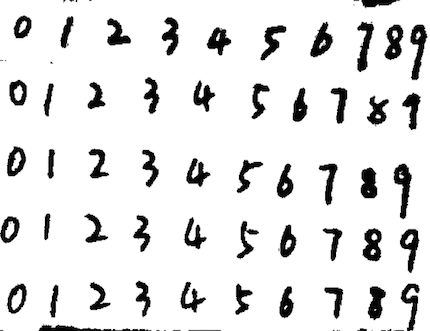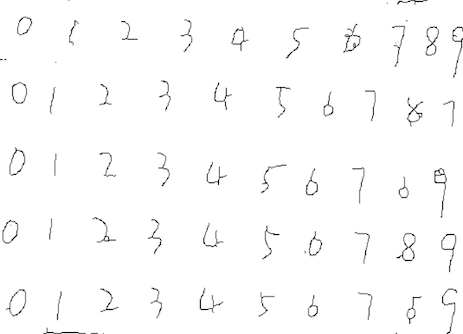brief introduction
Refine deletion conditions
-
Internal points cannot be deleted -
Orphans cannot be deleted -
Line endpoints cannot be deleted -
If P is the boundary point, after removing P, if the connected component does not increase, P can be deleted
Refine Steps
|| p3 || p2 || p9 || || p4 || p1 || p8 || || p5 || p6 || p7 || Where p1=1 is a black dot. If the following four conditions are met at the same time, p1 is deleted, that is, p1=0: 2 ≤ NZ (p1) ≤ 6//Used to exclude isolated points and internal points NZ (p1)=l//NZ (p1) is the number of branches at p1 point. If the number of branches is 1, it indicates the boundary point. After deletion, no connected component will be added p2 * p4 * p8 = 0 or NZ(p2) != 1//Delete downwards to avoid interruption p2 * p4 * p6 = 0 or NZ(p4) != 1//Delete to the right to avoid interruption p6 * p8 * p2 = 0 or NZ(p8) != 1//Delete to the left to avoid interruption p6 * p4 * p8 = 0 or NZ(p6) != 1//Delete upward to avoid interruption experimental result


Deficiency and improvement
-
Necking: deformation occurs at the intersection of lines -
Extra branches: extra branches will be generated due to uneven thickness of lines -
Head reduction: the ends of thicker lines are easy to be reduced in layer by layer corrosion, which is especially serious for the originally shorter digital lines.
reference




























































